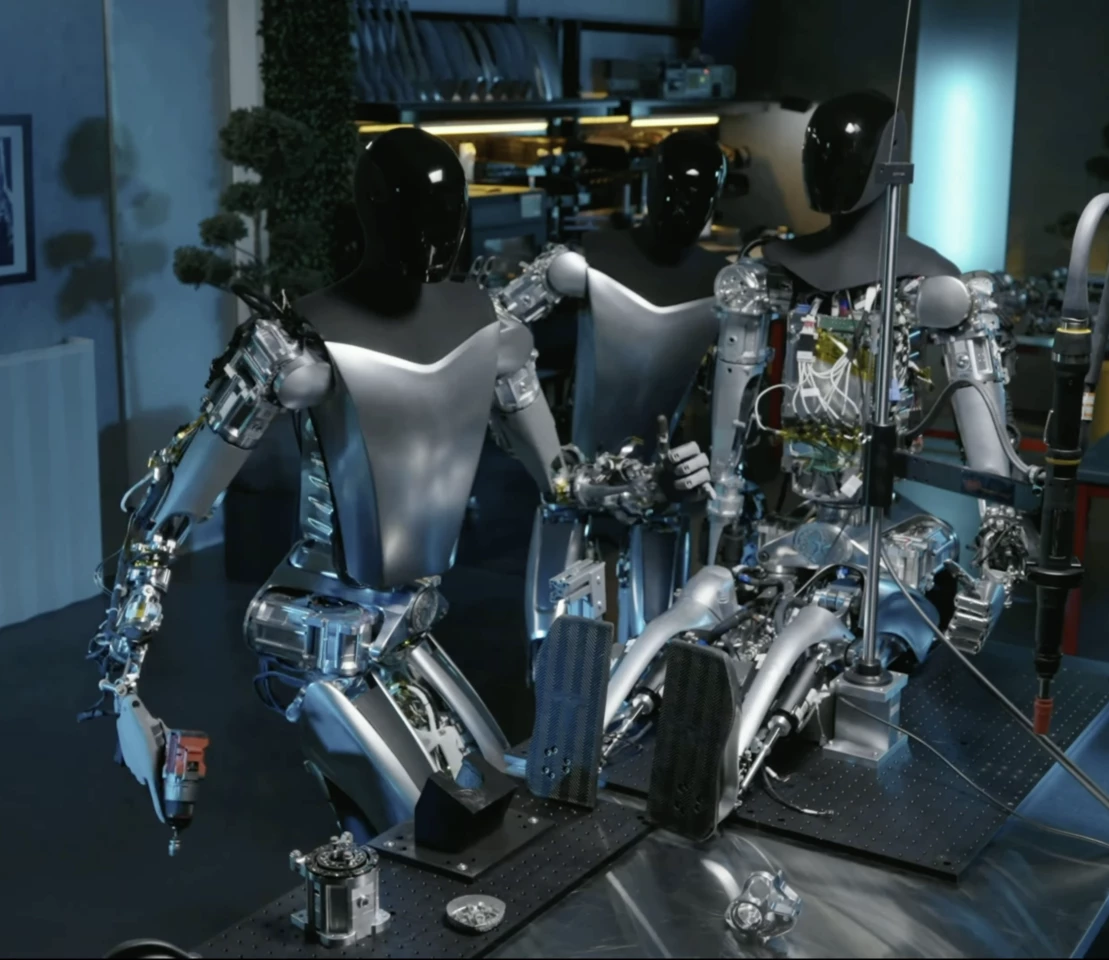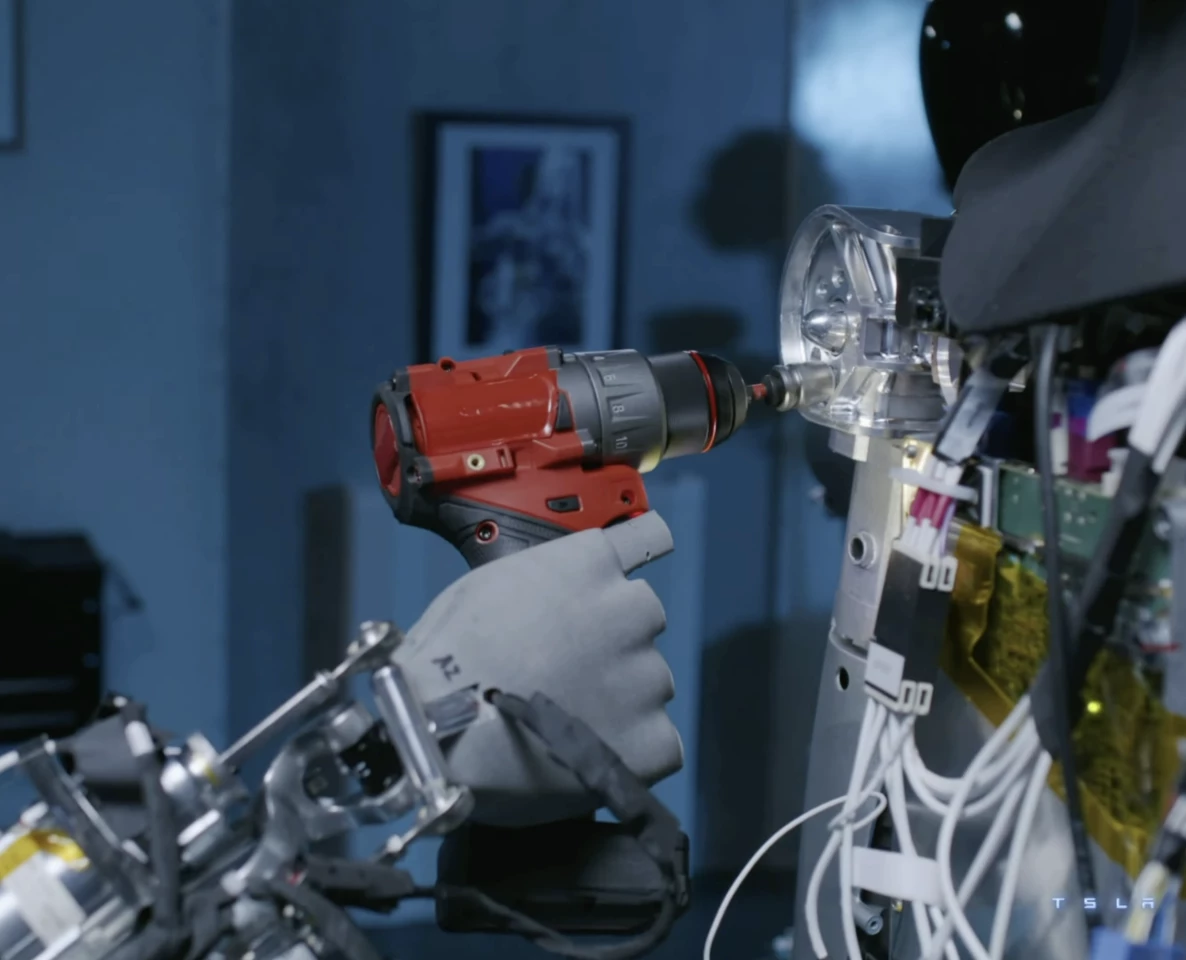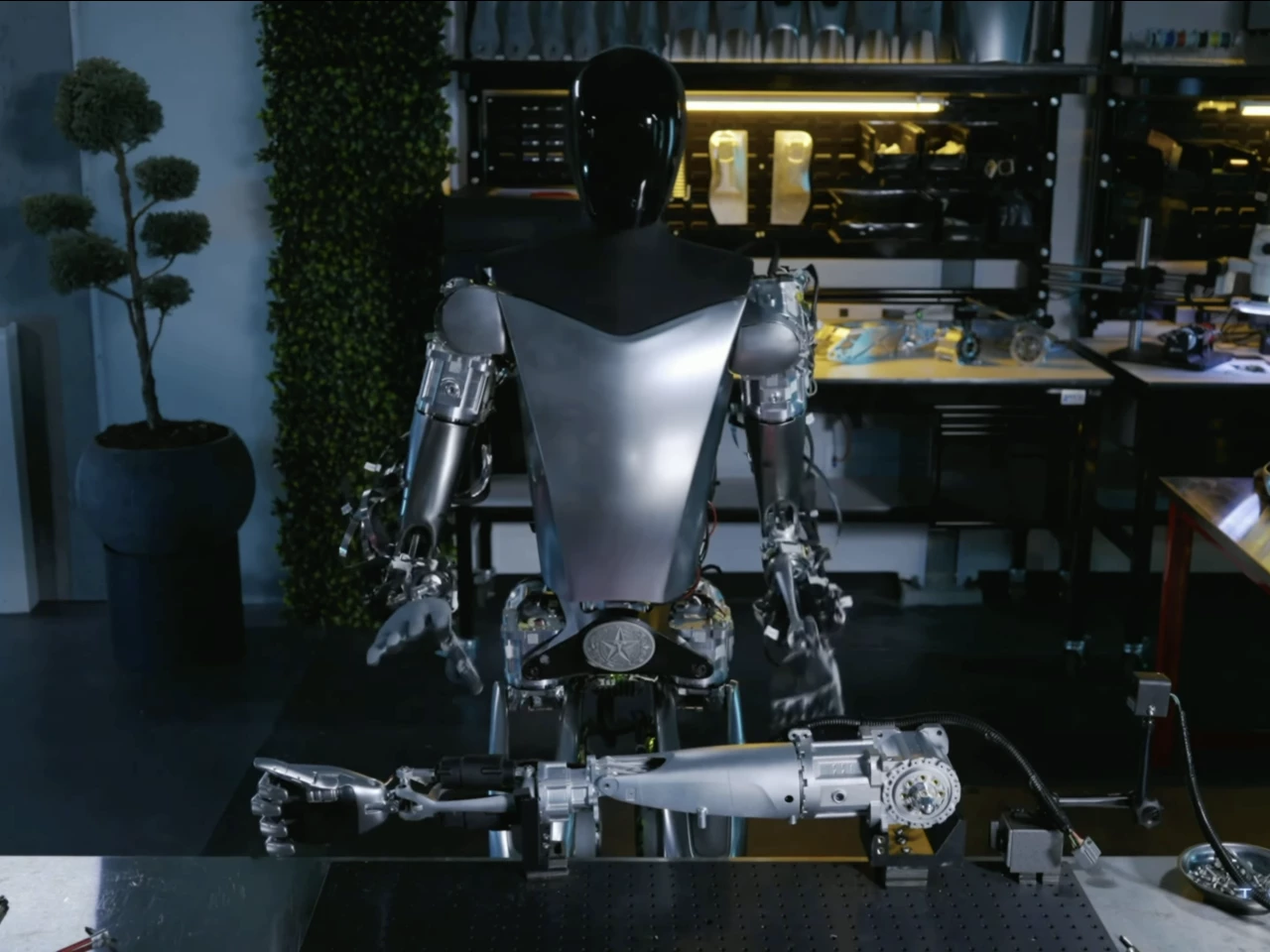An uncharacteristically subdued Elon Musk presented some short video on the Optimus prototype, noting that as recently as October last year, it had to be rolled out on stage to wave like a politician.
"It's worth bearing in mind that when we did AI day, this version of Optimus didn't walk at all," said Musk. "So the rate of improvement here is quite significant. It's obviously not doing parkour, but it is walking around, and we have multiple copies, I suppose, of Optimus."
The video shows Optimus walking around – albeit fairly slowly in comparison to the parkour-capable Atlas robot by Boston Dynamics. It also makes use of its opposable thumbs and human-like hands, in a sequence in which one Optimus robot unplugs a dismembered Optmus arm from a test stand, picks it up, and carries it over to a workstation where another bot is working on a third. With some crafty editing, it gives the impression that the first robot is holding the arm in place while the second bolts it onto the third robot in a mockup of android-based manufacturing.

If it suffers in comparison to Atlas, it's not alone. Atlas is the most advanced humanoid robot on the planet, and has been for many years now. But the context here is important; Boston Dynamics has been working on bio-mimetic robots since 1992. It unveiled its first humanoid PETMAN robot in 2009, and within two years it was shown walking, squatting, kneeling and balancing against push forces. Atlas made its debut in 2013, and has taken a solid 10 years to learn to dance, do parkour, and begin to perform some basic tasks. So it seems fair to give the youthful Optimus bot time to catch up.
"The thing that Tesla brings to the table that others don't have, we're the most advanced in real-world AI," said Musk. "So the same AI that drives the car ... You can think of the car as a robot on wheels, and this is a robot on legs. I don't think there's anyone even close to Tesla on solving real-world AI. It's not that helpful to have a humanoid robot if you have to program every action. It needs to be able to walk around autonomously and solve tasks. you should be able to instruct it in simple things, by showing visually the robot needs to do, or just telling it what to do. That's the key advantage that we have."
"We're also good at designing things for manufacturing, and manufacturing at scale," he continued. "The actuators in Optimus are all custom designed Tesla actuators. We designed the electric motor, the gearbox, the power electronics, obviously the battery pack, everything else that goes into Optimus. We were quite surprised to find how little was available off the shelf. There's a vast number of electric motors and gearboxes and whatnot available in the world, and we found none of them were useful in a humanoid robot. So the same team that designed the groundbreaking electric motors in, say, the Model S Plaid, designed the actuators in the robot. For practical purposes what this means is that we should be able to bring an actual product to market at scale that is useful, far faster than anyone else."

While this remains to be seen, it's definitely a departure from the research-first, limited-scale commercialization approach Boston Dynamics has taken. Tesla is developing its robot to be a mass-manufactured product from the get-go, and one useful enough to become a general-purpose labor saver.
Of course, general-purpose humanoid robots are projected to have an incredible impact on society as a whole, and while Musk is pushing hard to get these things built and into service as quickly as possible, he's well aware of what they could mean.
"Assuming the things I'm saying are true, at least, they are true, it's just a question of the timing, you start getting into interesting questions," he says. "You can see a home use for robots, certainly industrial uses for humanoid robots. I think we might exceed a 1:1 ratio of humanoid robots to humans. It's not even clear what an economy means at that point. If an economy is output per person times persons, but if output is much higher and there's no limit on persons, then what's the actual limit on the economy? We're still pretty far from Kardashev scales here, but we're getting there."
When asked if near-future generations of AI, combined with humanoid robots, could start helping Tesla through its automotive "production hell," Musk didn't think so, but admitted that even he might be out of a job once they can.
"I don't see AI helping us make cars any time soon," he said. "At that point, I mean, there's no point in any of us working I think. We should all just chill out. I am a little worried about the AI stuff, I think it's something we should be concerned about. I think we need some kind of regulatory authority overseeing AI development and making sure it's operating within the public interest. It's quite a dangerous technology. I fear I may have done some things to accelerate it, which is ... I don't know ... I think Tesla's doing good things in AI, but this one stresses me out, so I don't know what to say about it."

Still, it's full steam ahead on the Tesla Bot, and Musk still believes investors don't yet know what they're looking at.
"It's probably the least understood or appreciated part of what we're doing at Tesla, but will probably be worth significantly more than the car side of things long-term," he said.
You can jump to 1:48:20 in the video below to see where Optimus is at.
Source: Tesla









